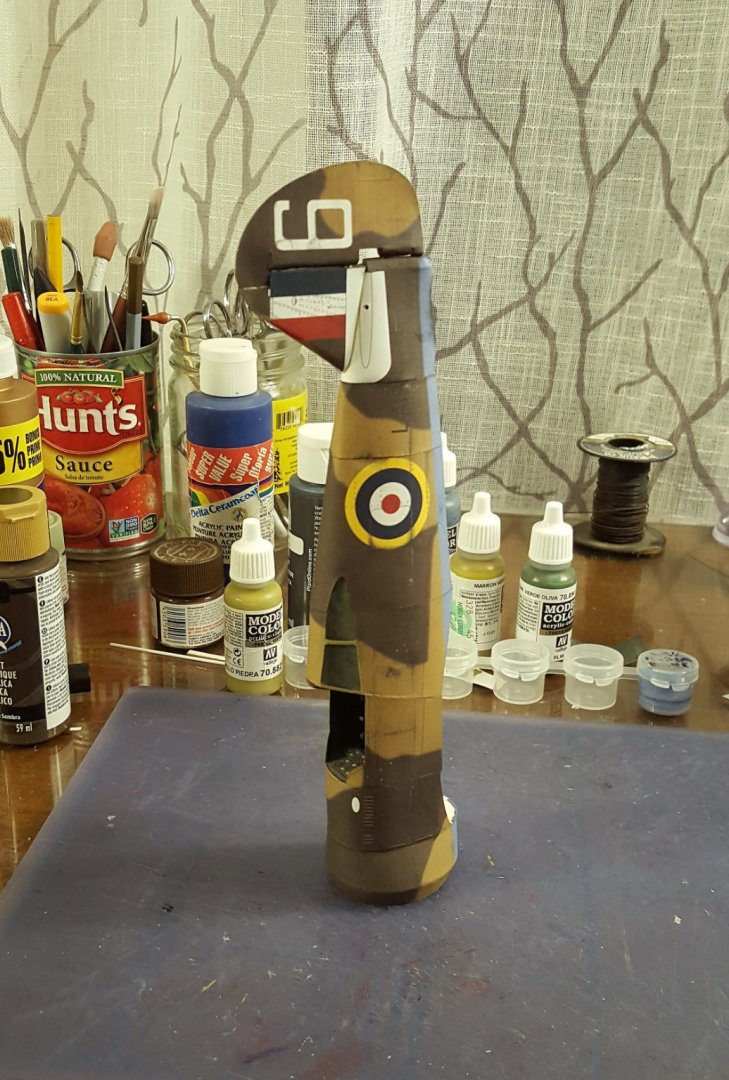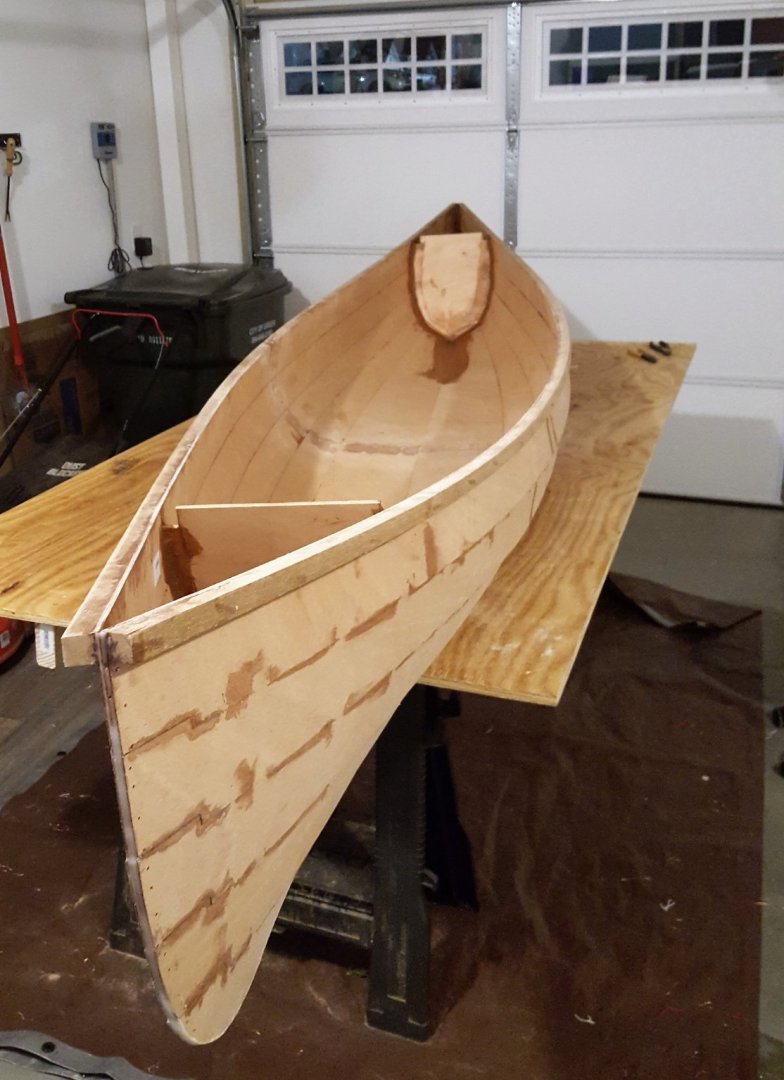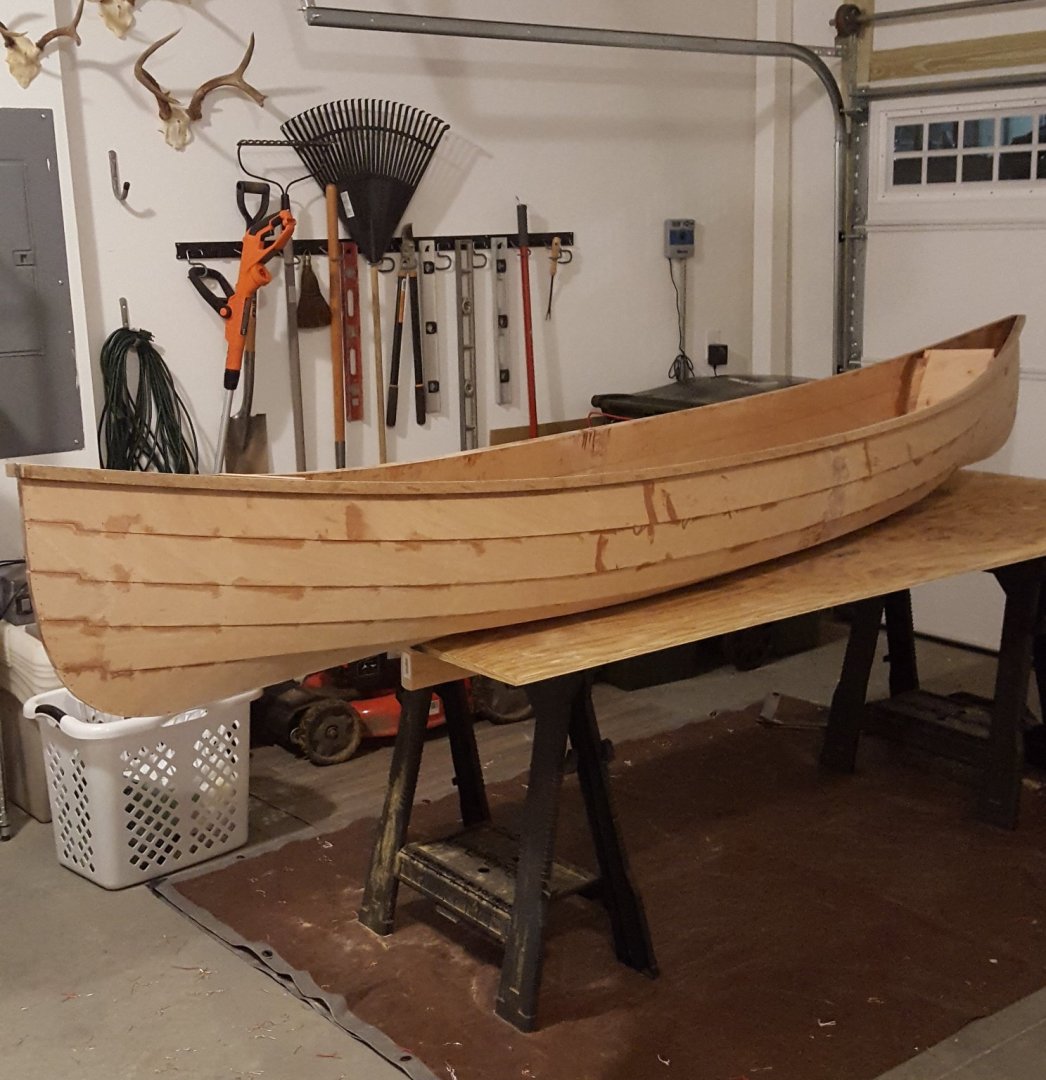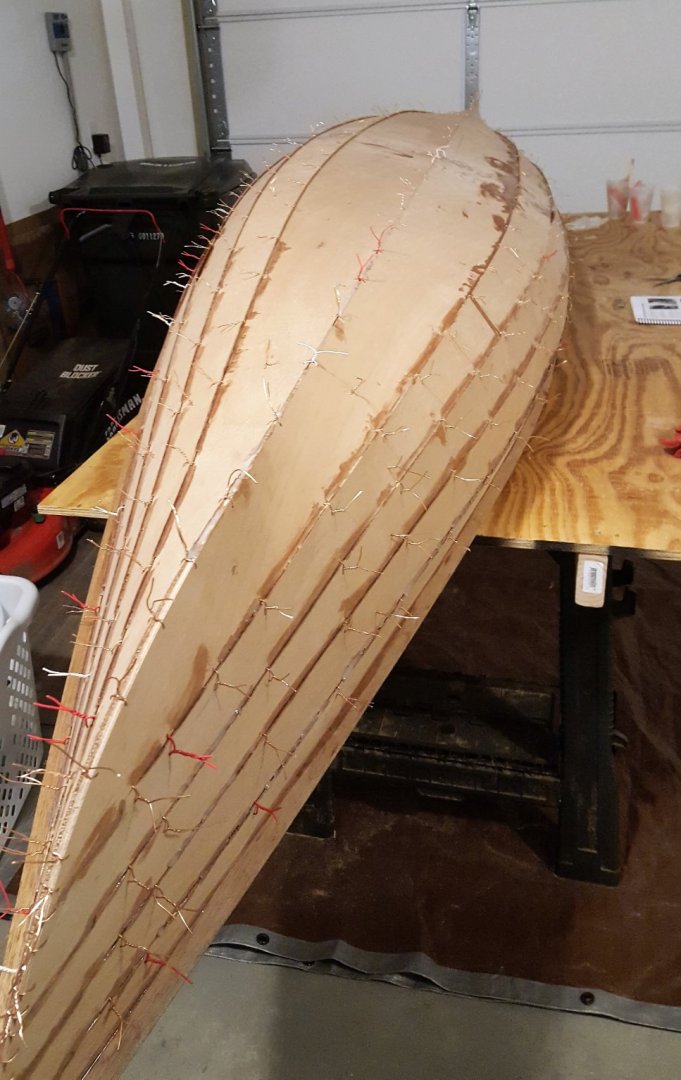-
Posts
10,524 -
Joined
-
Last visited
Content Type
Profiles
Forums
Gallery
Events
Everything posted by ccoyle
-
Fuselage, cont'd. Not really happy with this kit, which is too bad considering how much I like the subject. In short, there are a disturbing number of fit issues that I have only partially been able to navigate. On top of that, the diagrams are on the skimpy side; this has led to the discovery of a number of parts only after I have completed the particular structure to which they belong. Oopsie! Anyways, if the model is held at arm's length and viewed in dim light, it still creates the impression of a Mohawk.
-
That's not by accident. Quarter badges are not real windows, but rather an attempt to fool the eyes of lookouts on potential adversaries or prizes into thinking that the sloop is a larger man-of-war, e.g. a frigate, which would have real quarter galleries.
- 59 replies
-
- Fly
- Victory Models
-
(and 1 more)
Tagged with:
-
Beautiful! Your ship modeling skills are matched by your photography skills.
- 138 replies
-
- glad tidings
- model shipways
-
(and 1 more)
Tagged with:
-
There's that famous white shelf with yet another great-looking model! Congratulations, David!
- 136 replies
-
- kolderstok
- batavia
-
(and 1 more)
Tagged with:
-
Pages will roll over automatically based on the number of posts made. There is no method to create units.
- 4 replies
-
- Amerigo Vespucci
- Mantua
-
(and 1 more)
Tagged with:
-
I forgot to edit my post last night -- I got up a second wind and whipped up a last batch of resin. It was like a Goldilocks moment -- it came out just right. Let me just say that getting the right consistency made a BIG difference in both the speed of finishing the task and its neatness. So tonight I get to have a clip-n-pull party for all those stitches, oh boy! Then we'll get to see what it looks like without the "porcupine" visual effect (or "cactus," as someone at work called it).
-
Welcome aboard, Bjørn!
-
Been epoxying seams -- first step is to "tack weld" between the stitches. Instructions said to make the epoxy the consistency of hollandaise sauce -- big help. 🙄 First batch was too thick, second was too thin. Still have about a third of the tack welding left to do, but I ran out of steam for the evening.
-

New 1:48 HMS Endeavour out later this year
ccoyle replied to James H's topic in Wood ship model kits
With the exception perhaps of Vanguard Models, the R&D wheels at most model kit companies turn slowly. -
First allow me to express condolences for the passing of your father. Such things are always hard. This next part will also be hard, but for different reasons. It is difficult to sell even moderately good ship models, and if they do sell, I think you'd be surprised to find out how little they fetch. Your father's models, though, are simply not built to a standard that would make them attractive to knowledgeable ship model buyers. They have too many issues in terms of general appearance, workmanship, materials, and fidelity to subject matter (but hopefully he enjoyed building them, which is the main thing for a hobbyist). In all honesty, I think you would be hard pressed to get more than a few dollars for them, if anything. Wish I had better news for you.
-
I'm a big fan of MK's pre-spiled planking. I think you'll enjoy this kit.
- 22 replies
-
Welcome, Mark! The wooden Mary Rose kit you are speaking of is no doubt the Caldercraft kit. As nice as it is, it is a bit dated in terms of design philosophy and is certainly not beginner-friendly. Happily, there are many exciting new kit products that have come out in recent years that are easier to build and have far better instructions. Have a look through our kit reviews section to check some of these out. Cheers!
-

Looking for advice on starting a build log
ccoyle replied to Ken_2's topic in New member Introductions
Except for our standardized naming conventions, there are no particular hard and fast rules for build logs. It's pretty much a freestyle thing. -
Welcome! Your models turned out nicely.
About us
Modelshipworld - Advancing Ship Modeling through Research
SSL Secured
Your security is important for us so this Website is SSL-Secured
NRG Mailing Address
Nautical Research Guild
237 South Lincoln Street
Westmont IL, 60559-1917
Model Ship World ® and the MSW logo are Registered Trademarks, and belong to the Nautical Research Guild (United States Patent and Trademark Office: No. 6,929,264 & No. 6,929,274, registered Dec. 20, 2022)
Helpful Links
About the NRG
If you enjoy building ship models that are historically accurate as well as beautiful, then The Nautical Research Guild (NRG) is just right for you.
The Guild is a non-profit educational organization whose mission is to “Advance Ship Modeling Through Research”. We provide support to our members in their efforts to raise the quality of their model ships.
The Nautical Research Guild has published our world-renowned quarterly magazine, The Nautical Research Journal, since 1955. The pages of the Journal are full of articles by accomplished ship modelers who show you how they create those exquisite details on their models, and by maritime historians who show you the correct details to build. The Journal is available in both print and digital editions. Go to the NRG web site (www.thenrg.org) to download a complimentary digital copy of the Journal. The NRG also publishes plan sets, books and compilations of back issues of the Journal and the former Ships in Scale and Model Ship Builder magazines.







